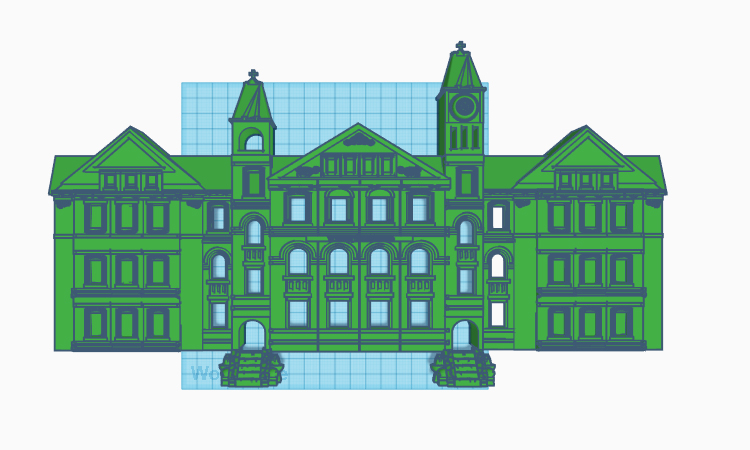Industrial and systems engineering graduate students place second in national contest
Published: Jan 8, 2021 3:07 PM
By Cassie Montgomery
Two industrial and systems engineering doctoral students have placed second in a national 3D design competition hosted by Physna, a Cincinnati-based technology start-up. Allison Brown and Mohsen Nikfar competed against teams from other top engineering schools around the country earning the runner-up position for their design, Space Shuttle Launch.
Physna recently introduced Thangs, an advanced geometric search platform for 3D models. Student competitors were tasked with solving problems using 3D design on the Thangs platform. The goal behind the competition is to support engineering talent across the country and expose students to advanced technologies of geometric search and smart collaborative tools.
“I congratulate Allison and Mohsen on a fantastic effort. They took on a challenge to use a new design capability with Thangs and put in the work to be very competitive and represent Auburn University well,” said Gregory Harris, associate professor of industrial and systems engineering.
Inspiration for their space shuttle design came to Brown while listening to an audiobook of Gene Kranz’s “Failure is Not an Option” about the early days of the U.S. Space Program.
“I suggested to Mohsen that we do something related to NASA or space travel. The goal of this competition was to create a brand-new design by combining models already uploaded to the Physna Thangs website, and we thought that a space shuttle was well-suited to accomplish this,” she said. “We ended up using nine models from the Thangs repository including a jet, a decorative plate, a mechanical shaft and, my personal favorite, a lightsaber chassis. We had to plan our design so that it could be made in a short period of time, and to me this was the most challenging, but also one of the most fun, parts of the competition.”

model of Samford Hall
in the competition's first round.
Nikfar also thought the space shuttle launch idea was perfect for the design challenges it presented and would build upon their design of Samford Hall submitted in the competition's first round.
“I really liked the idea because it was challenging and at the same time, manageable in the short period of time we had to complete it,” he said. “I’ve been fascinated by the idea of humankind exploring space since I was in middle school.”
Brown, whose research is in applying systems engineering techniques for additive manufacturing data, is a 3D printing hobbyist familiar with online repositories for CAD models. Nikfar, whose research interest is using sentiment analysis techniques and simulation to try to understand how different ideas spread in social media, spent summers growing up working in his uncle’s workshop creating CAD files. Both were excited to enter the competition.
“When I heard about the awesome capabilities of Physna’s new model repository site Thangs, I was really excited and inspired to join the design competition they were hosting. Mohsen and I decided to team up to work together and he was a great teammate,” Brown said.
“The major challenge was using the current models in the Thang website to create our shuttle launch. However, this made it more fun,” Nikfar added.
Media Contact: , cmontgomery@auburn.edu, 334.844.3668
Allison Brown and Mohsen Nikfar earned second place in a national 3D design competition for their design, Space Shuttle Launch.

